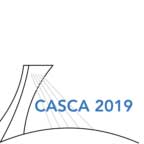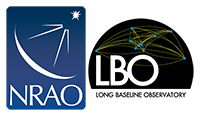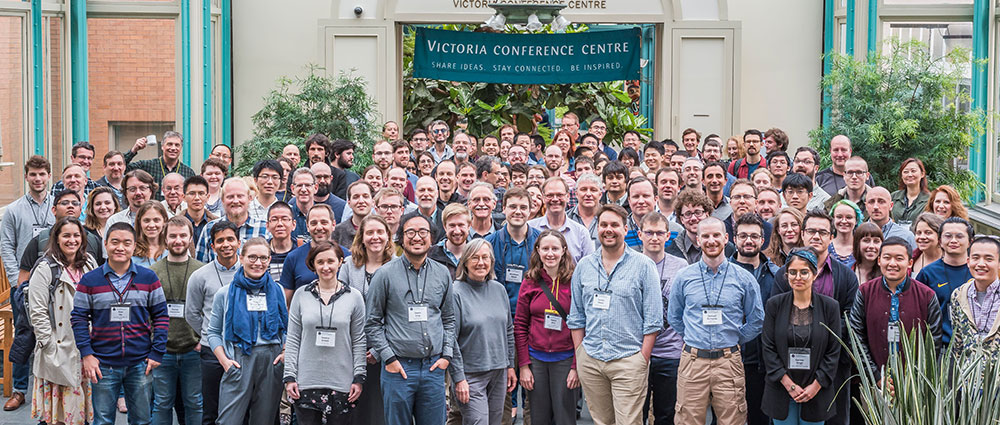NRAO eNews
Volume Vol#, Issue Iss#
Day# Month# Year#
NRAO eNews
Volume Vol#, Issue Iss# • Day# Month# Year#

Upcoming Events

Memorial Symposium for Riccardo Giacconi
May 29 - 30, 2019 | Washington, DC

NRAO Community Day at TTU
May 30 - 31, 2019 | Lubbock, TX

NRAO Users Committee / ANASAC meeting
Jun 4 - 6, 2019 | Charlottesville, VA

NRAO Community Day at UMBC
Jun 13 - 14, 2019 | Baltimore, MD

CASCA 2019
Jun 17 - 20, 2019 | Montréal, Québec

Radio/mm Astrophysical Frontiers in the Next Decade
Jun 25 - 27, 2019 | Charlottesville, VA

7th VLA Data Reduction Workshop
Oct 7 - 18, 2019 | Socorro, NM

ALMA2019: Science Results and Cross-Facility Synergies
Oct 14 - 18, 2019 | Cagliari, Sardinia, Italy
NRAO, UVA, & VDI Technology: Imaging the M87 Black Hole

ALMA Band-6 Cartridge (211-275 GHz). Height ~50 cm.
[click to enlarge]
Until recently the evidence for black holes was indirect, obtained by measuring their gravitational effect on other celestial bodies and the detection of gravitational waves with the Laser Interferometer Gravitational-Wave Observatory. Now the black hole at the center of galaxy M87 in the Virgo cluster has been imaged directly by combining simultaneous observations from eight millimeter-wave observatories around the world. This mapping of the ring of gas in extremis around the black hole enabled astronomers to measure its mass (6.5 billion solar masses) and further confirmed Einstein’s general theory of relativity.
The radio telescopes used in the M87 observations were: the Atacama Large Millimeter/sub-millimeter Array (ALMA) and the Atacama Pathfinder Experiment in Chile; the Submillimeter Telescope (SMT) in Arizona; the Large Millimeter Telescope (LMT) in Mexico; the South Pole Telescope (SPT); the IRAM 30-m telescope in Spain; and the Submillimeter Array and James Clark Maxwell Telescope in Hawaii.
Having telescopes spread across the Earth, in combination with the short observing wavelength (1.3 mm, 230 GHz), yielded the required angular resolution. The large combined collecting area enabled sufficient power to be received. The nearly quantum-limited sensitivity of the superconducting heterodyne receivers on each of the telescopes was also crucial, and enabled detection of the weak signals.
Most of the superconducting receivers were developed and fabricated between 1992 and 2006 in a long-term joint project between the NRAO Central Development Laboratory (CDL) and the University of Virginia Microfabrication Laboratory [1], including the 132 ALMA receivers, and two receivers each on the SMT, LMT, and SPT.
The superconducting mixers operate at liquid helium temperature (4 deg K) and use niobium circuits on a quartz substrate to couple the astronomical signal power to Superconductor/Insulator/Superconductor (SIS) tunnel junctions. SIS junctions have an extremely sharp current-voltage nonlinearity which makes them nearly ideal heterodyne converters [2] when driven with a strong local oscillator close in frequency to the signal. The difference (intermediate) frequency is in the 4-12 GHz range. The 276 intermediate-frequency amplifiers, which also operate at 4 K, were designed and built at the NRAO CDL using InP field-effect transistors.
The NRAO CDL also built all the ALMA local oscillator sources [3,4] using broad-band frequency multipliers developed and fabricated by Virginia Diodes Inc. (VDI), a small business which grew out of UVA millimeter/submillimeter R&D funded in part by NRAO. To form an image, the Local Oscillator sources must be phase-locked to a common reference which is provided by a central source and distributed over an actively stabilized fiber optic link [5], preserving the phase of the received signals.
The ALMA correlator, a 17 peta-flop special purpose computer designed and built at the CDL, combines the 8 GHz of data from each of the telescopes in real time. For the M87 black hole observations, the data from the 66 ALMA telescopes were combined in the ALMA correlator so the array acted as a large single antenna. These ALMA data were then output to supercomputers at Max-Planck Institute for Radio Astronomy and Massachusetts Institute of Technology Haystack Observatory for correlation with the data from the other telescopes.
References
- Anthony R. Kerr, Shing-Kuo Pan, Stéphane M. X. Claude, Philip Dindo, Arthur W. Lichtenberger, John E. Effland, and Eugene F. Lauria, Development of the ALMA Band-3 and Band-6 Sideband-Separating SIS Mixers, IEEE Transactions on Terahertz Science and Technology, vol. 4, no. 2, March 2014.
- John R. Tucker and Marc J. Feldman, Quantum detection at millimeter wavelengths, Rev. Mod. Phys. 57, 1055, Oct. 1985.
- Bryerton, E.; Saini, K.; Muehlberg, J.; Vaselaar, D.; Thacker, D., Low-Noise Sub-Millimeter Wave Local Oscillators for ALMA, IEEE MTT-S International Microwave Symposium, 2013 IEEE MTT-S International, Seattle, WA, June 2013.
- E. Bryerton, K. Saini, M. Morgan, D. Thacker, and T. Boyd, Development of Electronically Tuned Local Oscillators for ALMA, Joint 30th International Conference on Infrared and Millimeter Waves and 13th International Conference on Terahertz Electronics, Williamsburg, Virginia, USA, September 2005.
- W. Shillue, W. Grammer, C. Jacques, et al, A high-precision tunable millimeter-wave photonic LO reference for the ALMA telescope, IEEE Microwave Theory and Techniques Symposium, Seattle, June, 2013.
lbo.us Going Dark

The Very Long Baseline Array (VLBA) was operated by the Long Baseline Observatory (LBO) for two years before being merged back into the National Radio Astronomy Observatory (NRAO) last October. Reintegration activities will come to a close on 4 June 2019 when the lbo.us web domain will expire.
VLBA web content has been merged back into the NRAO web, the @lbo.us email addresses have reverted back to @nrao.edu, and ftp.lbo.us will stop operating.
The primary entry point into the NRAO science web site is https://science.nrao.edu/ . The VLBA pages can be accessed from here or directly from: https://science.nrao.edu/facilities/vlba .
Please take this opportunity to update your address books and bookmarks.
NAASC Conference: New Horizons in Planetary Systems

NAASC Conference attendees
Brett McGuire
[click to enlarge]
Nearly 150 scientists are meeting at the Victoria Conference Center in the heart of picturesque Victoria, British Columbia, on Canada's Pacific coast. Arranged by the North American ALMA Science Center's Canadian arm at NRC-Herzberg, the 13-17 May conference is devoted to understanding planetary systems from protoplanetary disks through to the solar system, exoplanets, and debris disks. The topic was in its infancy when it was addressed at the first NAASC conference in 2007, and ALMA data has been transformational. Abstract of talks are available at the conference website.
ALMA Program News

ALMA from Licancabur
Pablo Carrillo
[click to enlarge]
Cycle 6 Science Observing
The Joint ALMA Observatory suspended 12-m and Total Power Principal Investigator (PI) science array observations on 5 May 2019, a scheduled stop in PI observing for the extensive antenna move from configuration C43-4 (784m maximum baseline) to configuration C43-10 (16.2 km maximum baseline; approximate diameter of Washington, D.C. beltway). Atacama Compact Array observations continue; and 12-m observing will resume near the end of the month in the long baseline configurations.
Cycle 7 Call for Proposals
The formal Call for ALMA Cycle 7 Proposals appeared at the ALMA Science Portal 19 Mar 2019 with proposals due 17 Apr. Proposal numbers are not yet final pending a report to be published soon on the ALMA Science Portal but were similar in number and distribution to those received in Cycle 6. Proposals have been distributed to reviewers, who will meet in Atlanta, Georgia 16-21 June; results are expected at the end of July.
ALMA Science Sustainability
A Call for Proposals for ALMA Development Studies was released 3 Dec 2018. The deadline for proposals was 1 May 2019 for funding during U.S. government Fiscal Year 2020, depending on the federal budget process. Eleven proposals were received from within the North America ALMA Operations Partnership to investigate a potential ALMA upgrade (hardware, software, or advanced techniques). Proposals were sought to address ideas which address the goals elucidated in The ALMA Development Roadmap, ALMA Memo 612. Eleven proposals were received from 56 prospective investigators at 11 institutions, oversubscribing expected funding by over three-to-one. An independent review panel is established with U.S. National Science Foundation (NSF) consent to evaluate and rank the proposals. The ranked list then receives consent from NSF and is incorporated into a recommendation to the North American ALMA Executive.
ALMA Science Conference
The ALMA partnership is organizing the Fourth ALMA Science Conference in Cagliari (Sardinia, Italy) on 14-18 Oct 2019. At the conference the full breadth of ALMA science will be discussed, with special emphasis on results from the first rounds of ALMA Large Programs, ALMA's high resolution and high frequency capabilities, the new Solar and Very Long Baseline Interferometry modes, as well as the synergy between ALMA and other observatories. As in previous editions of the conference series, we expect to discuss the scientific priorities for the implementation of the ALMA Development Roadmap.
Abstract submission for the conference closed 15 May 2019. The deadline for regular registration (with payment) is 31 July 2019. Information on the registration procedure, invited speakers, child care and financial support is on the conference website.
ngVLA Project News

With the Astro2020 science white paper deadline behind us, and ~600 white papers submitted, there will be a broad range of exciting science to discuss during this workshop. Participation from early career astronomers is strongly encouraged. All students presenting either an oral talk (if selected) or a poster, will be offered hotel rooms free of cost for up to four nights in addition to discounted registration fees.
This workshop will review the astrophysical frontiers identified in the Science White Papers submitted to the Astro2020 Decadal Survey. A particular focus will be on those science frontiers that demand observations at centimeter and/or millimeter wavelengths across all Astro2020 thematic areas. A broad range of innovative ideas and approaches will be described, and this workshop will allow those ideas to be explored in view of the current and forthcoming facilities, including the next generation Very Large Array (ngVLA). The program is designed primarily around contributed presentations highlighting science frontiers and potential observations with the ngVLA. Such observations will additionally be discussed in the broader context of multi-wavelength and multi-messenger astronomy. Contributions from early career researchers will be especially welcomed.
The late poster abstract submission deadline is 9 June.
The ngVLA will proceed into a detailed design and development phase in 2020. The ngVLA Science Advisory Council and the NRAO aim to ensure that the ngVLA will be capable of making the measurements required to fulfill the community’s vision for radio wavelength astronomy over the next decade and beyond.
Please visit the conference website for additional information.
Recent Media Releases
|
Black Hole’s Tug on Space Pulls Fast-Moving Jets in Rapid Wobble |
|
|
The Giant In Our Backyard |
Career Opportunities
Scientist – Open Rank (4436): The North American ALMA Regional Center is recruiting for two scientific staff positions within the North American ALMA Science Center (NAASC). The focus of these positions will be working with the NAASC Scientific Software Group on research, development, and testing of heuristics for the ALMA calibration and imaging pipelines. Activities will include working with the international ALMA Pipeline Working Group for each upcoming Cycle’s development tasks, leading the implementation of new capabilities in the ALMA pipeline architecture, and performing full end-to-end testing of the ALMA pipeline.
Assistant Scientist (4439):The North American ALMA Regional Center is seeking a qualified candidate for a position in the North American ALMA Science Center (NAASC). Currently, there are two groups within the NAASC: an ALMA Community Support group and a Telescope Interface and Diagnostics group. A primary focus of the ALMA Community Support group within the NAASC is to develop the strategic plans and initiatives to grow and educate the ALMA user base, to help the community optimize their use of ALMA, and to facilitate the publication of data (original or archive). The Telescope Interface and Diagnostics group is the NAASC technical liaison to the Joint ALMA Observatory and is responsible for testing, verifying, and providing scientific input into the various tools needed for program scheduling and execution. All qualified applicants will be considered, and we are particularly interested in candidates who will align with the mission of the ALMA Community Support group by engaging the scientific community and growing the ALMA user base beyond those with radio, millimeter, and submillimeter expertise.
From the Archives
Ellen Bouton

[click to enlarge]
About this month's photo: Students participating in NRAO summer student programs arrive at their respective NRAO sites in late May and early June. Since its inception in 1959, the summer student program has engaged over 1,200 young people in scientific research, and many NRAO summer students have gone on to distinguished careers in astronomy and other physical sciences. The list of former NRAO summer students now includes women and men who represent a wide range of career stages, research interests, geographic locations, and ethnic backgrounds. In this photo, 2001 New Mexico students get an up-close tour of a Very Large Array antenna, with NRAO Public Information Officer Dave Finley (in the yellow hard hat) as their guide.
From the Archives is an ongoing series illustrating NRAO and U.S. radio astronomy history via images selected from our collections of individuals' and institutional papers. If readers have images they believe would be of interest to the Archives, please contact Ellen Bouton.

